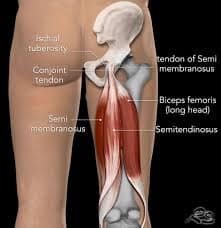
Hamstring tear recovery – rehabilitation, injury management personal training
Good advice for recovering from a hamstring tear typically involves a comprehensive and holistic approach, focusing on rest, rehabilitation, nutrition,…
01/08/2024

Good advice for recovering from a hamstring tear typically involves a comprehensive and holistic approach, focusing on rest, rehabilitation, nutrition, and addressing any underlying imbalances. Here’s a detailed plan based on these principles:
Initial Phase: Rest and Acute Care
1. Rest and Avoidance of Aggravating Activities:
– Rest the injured hamstring and avoid activities that cause pain or strain. Use crutches if necessary to offload weight from the leg.
2. IIce and Compression:
– Apply ice to the injured area for 15-20 minutes every 2-3 hours to reduce inflammation and pain. Use a compression bandage to minimize swelling.
3. Elevation:
– Keep the leg elevated to reduce swelling.
Rehabilitation Phase: Gentle Movements and Healing
1. Gentle Range of Motion Exercises:
– Begin with gentle movements to maintain flexibility and prevent stiffness. Slowly bend and straighten the knee within a pain-free range.
2. Isometric Exercises:
– Perform isometric contractions by gently pressing the heel into the floor without moving the leg. Hold for 5-10 seconds and repeat several times.
3. Massage and Myofascial Release:
– Gentle massage and myofascial release techniques can help improve blood flow and reduce muscle tension around the injured area.
Strengthening Phase: Gradual Rebuilding
1. Progressive Resistance Exercises:
– Start with low-resistance exercises and gradually increase the load as tolerated. Examples include:
– Hamstring Curls: Begin with bodyweight and progress to using resistance bands or light weights.
– Bridges: Lie on your back with knees bent, lift your hips off the ground, and squeeze your glutes. Hold for a few seconds and lower back down.
– Single-Leg Deadlifts: Stand on one leg, bend forward at the hips, and extend the opposite leg behind you. Return to standing and repeat.
2. Eccentric Exercises:
– Focus on the lengthening phase of muscle contractions to promote tendon healing and strength. For example, slowly lower the leg during hamstring curls.
3. Core and Hip Strengthening:
– Strengthen the core and hip muscles to support the hamstrings and improve overall stability. Exercises like planks, side-lying leg lifts, and clamshells can be beneficial.
Flexibility and Mobility Phase: Restoring Function
1. Gentle Stretching:
– Perform gentle hamstring stretches without pushing into pain. Hold each stretch for 20-30 seconds and repeat several times.
2. Dynamic Stretching:
– Incorporate dynamic stretches such as leg swings and walking lunges to improve flexibility and prepare the muscles for more intense activities.
Return to Activity Phase: Functional and Sport-Specific Training
1. Gradual Return to Activity:
– Slowly reintroduce functional activities and sports-specific movements. Begin with low-intensity exercises and progressively increase intensity and duration.
2. Plyometric Exercises:
– Once strength and flexibility are restored, incorporate plyometric exercises like bounding, hopping, and sprinting to improve power and agility.
3. Technique Improvement:
– Assess and improve technique in sports or activities to prevent future injuries. Focus on proper form and biomechanics.
Holistic Health and Nutrition
1. Anti-Inflammatory Diet:
– Consume foods rich in anti-inflammatory properties, such as fruits, vegetables, lean proteins, omega-3 fatty acids, and nuts.
2. Hydration:
– Maintain adequate hydration to support tissue health and recovery.
3. Sleep and Stress Management:
– Ensure sufficient sleep and manage stress through relaxation techniques, as both play crucial roles in the healing process.
Monitoring and Professional Guidance
1. Regular Monitoring:
– Keep track of your progress and any changes in symptoms. Adjust your rehabilitation plan as needed.
2. Seek Professional Guidance:
– Work with a physical therapist or a certified rehabilitation specialist to receive personalized guidance and ensure a safe and effective recovery process.
By following these steps and addressing the injury from multiple angles, you can support the healing process and reduce the risk of re-injury.
Bella vista, Hamstring care, injury management, norwest, personal trainer, personal training, Sports conditioning, sports performance

5 Reasons Personal Training in Norwest Is the Smartest Move for Your Health Looking for a Personal Trainer Near Norwest,…
22/10/2025